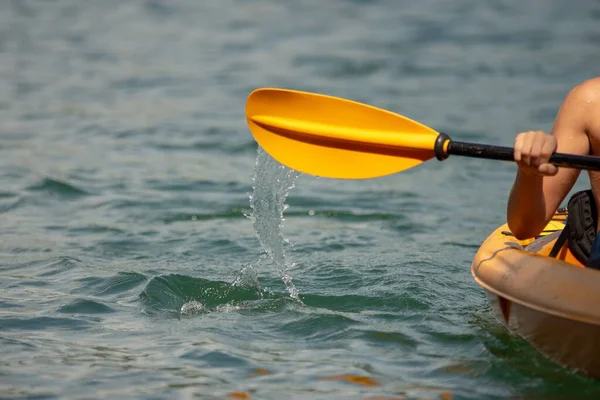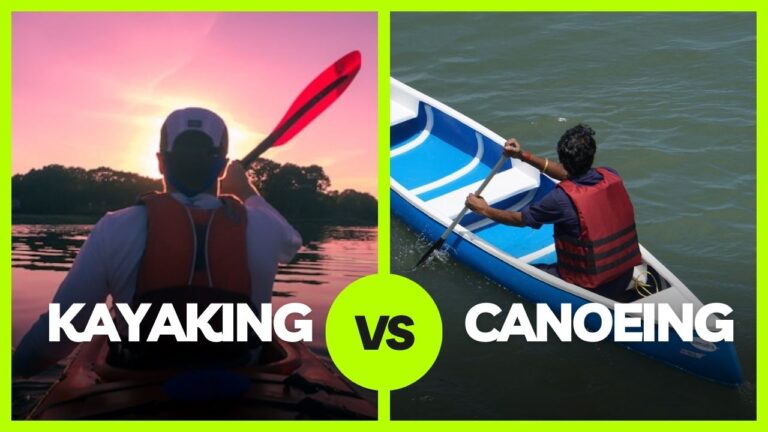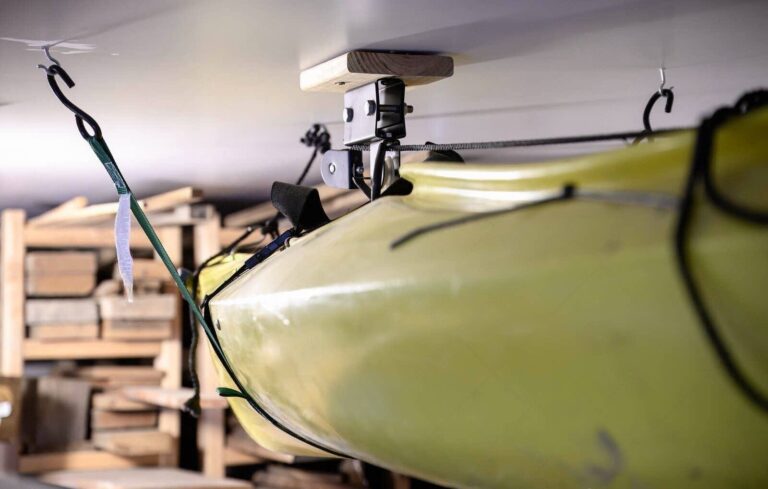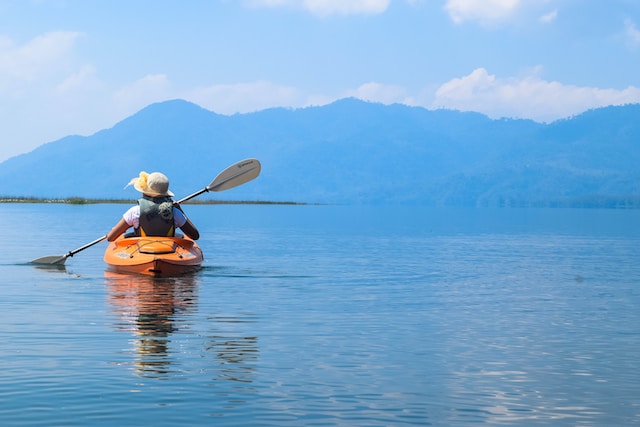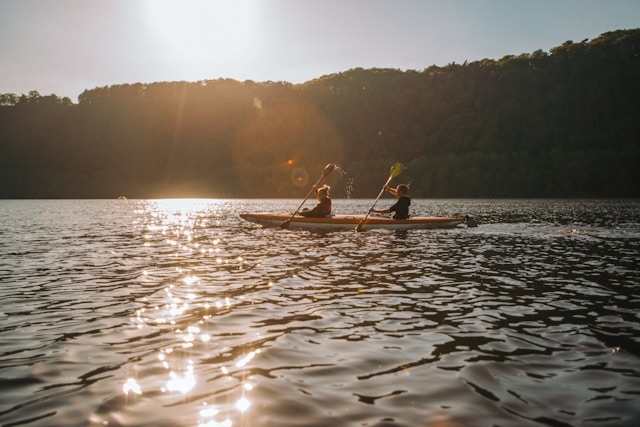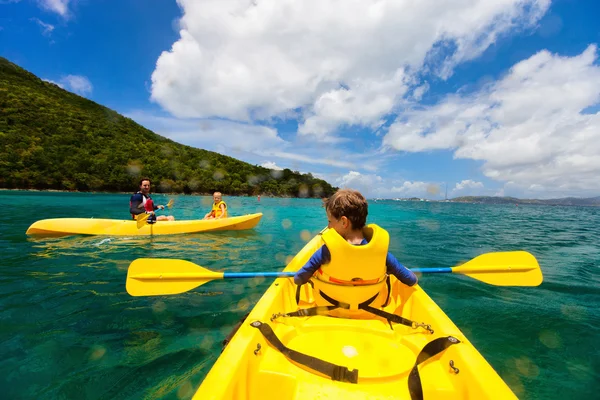Is Kayaking Hard or Easy? Find Out Now
Kayaking looks way more intimidating than it actually is! People see others out on the water and assume it takes special skills or athletic talent. But the truth is, most people can learn the basics of kayaking quickly and easily.
Is Kayaking Hard or Easy?
In this article, we’ll break down everything you need to know:
- The gear: How to choose a kayak that helps you feel stable and confident.
- Simple skills: The core paddling techniques are easy to master.
- Safety first: What to know to stay safe while having fun.
By the end, you’ll be able to decide if kayaking is right for you, and have everything you need to get started on this amazing outdoor adventure!
Basics of Kayaking
Before diving into the difficulty level of kayaking, it’s important to understand the basics of this outdoor activity.
By grasping the fundamentals of kayaking, you’ll gain a better perspective on its difficulty level.
What Makes Kayaking a Great Outdoor Activity
Kayaking is a beginner-friendly water activity that offers numerous benefits and enjoyment.
It allows you to explore breathtaking natural scenery, connect with nature, and experience a sense of freedom on the water.
Whether you prefer the tranquility of calm lakes or the exhilaration of navigating rapids, kayaking provides a versatile and thrilling outdoor adventure.
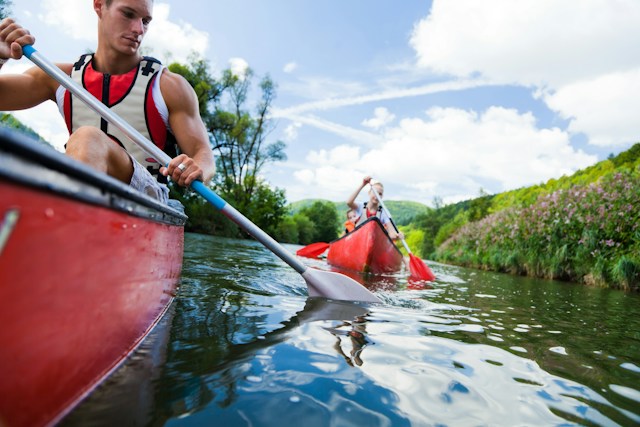
The Ease of Kayaking for Beginners
You might think kayaking looks hard, but it’s actually way easier than it seems! Anyone can learn with a little practice and the right tips. Seriously, all you really do is use a paddle to move forward and turn. And most kayaks are built so you don’t tip over every two seconds, even as a beginner.
The tricky part is getting the hang of exactly how to paddle for the best results. That’s where a quick lesson or two can really help speed things up. But once you’ve got the basics down, getting out on the water is pure fun!
What You Need to Start Kayaking?
Getting started with kayaking requires a few essential pieces of equipment.
Firstly, you’ll need a kayak, which can be rented or purchased.
For beginners, it’s recommended to start with a recreational kayak that offers stability and easy maneuverability.
Additionally, you’ll need a paddle, a personal flotation device (PFD) for safety, and proper attire, such as a swimsuit or quick-drying clothing.
It’s also advisable to bring sunscreen, a hat, and sunglasses to protect yourself from the sun’s rays.
By having the right equipment, you’ll be well-prepared to embark on your kayaking adventures.
The Right Kayak Makes a Difference
Picking the right kayak is seriously important, especially if you’re new to the sport. The wrong kayak can feel wobbly, hard to control, and just all-around frustrating. But the right one?
Makes kayaking feel easy and SO much fun!
For beginners, here’s what you want:
- Stability is key: Sit-on-top kayaks are awesome for this. They’re designed to be hard to tip over, which gives you confidence while you’re learning.
- Easy to turn: Wider recreational kayaks are perfect for calm water. They’re super simple to steer, so you can focus on paddling, not fighting with your boat.
- The right size: Bigger kayaks are more stable (but a bit slower). Smaller ones are easier to maneuver. Think about where you’ll mostly paddle to help decide.
Don’t worry, there are tons of beginner-friendly options out there! Once you nail the basics, you can start exploring all the other cool types of kayaks for different adventures.
Key Paddling Techniques for Easy Kayaking
When it comes to kayaking, mastering the right paddling techniques is essential for an easy and efficient experience on the water.
As a beginner, learning these techniques will greatly enhance your kayaking skills and improve your overall efficiency.
Let’s explore three key paddling techniques that every beginner should focus on:
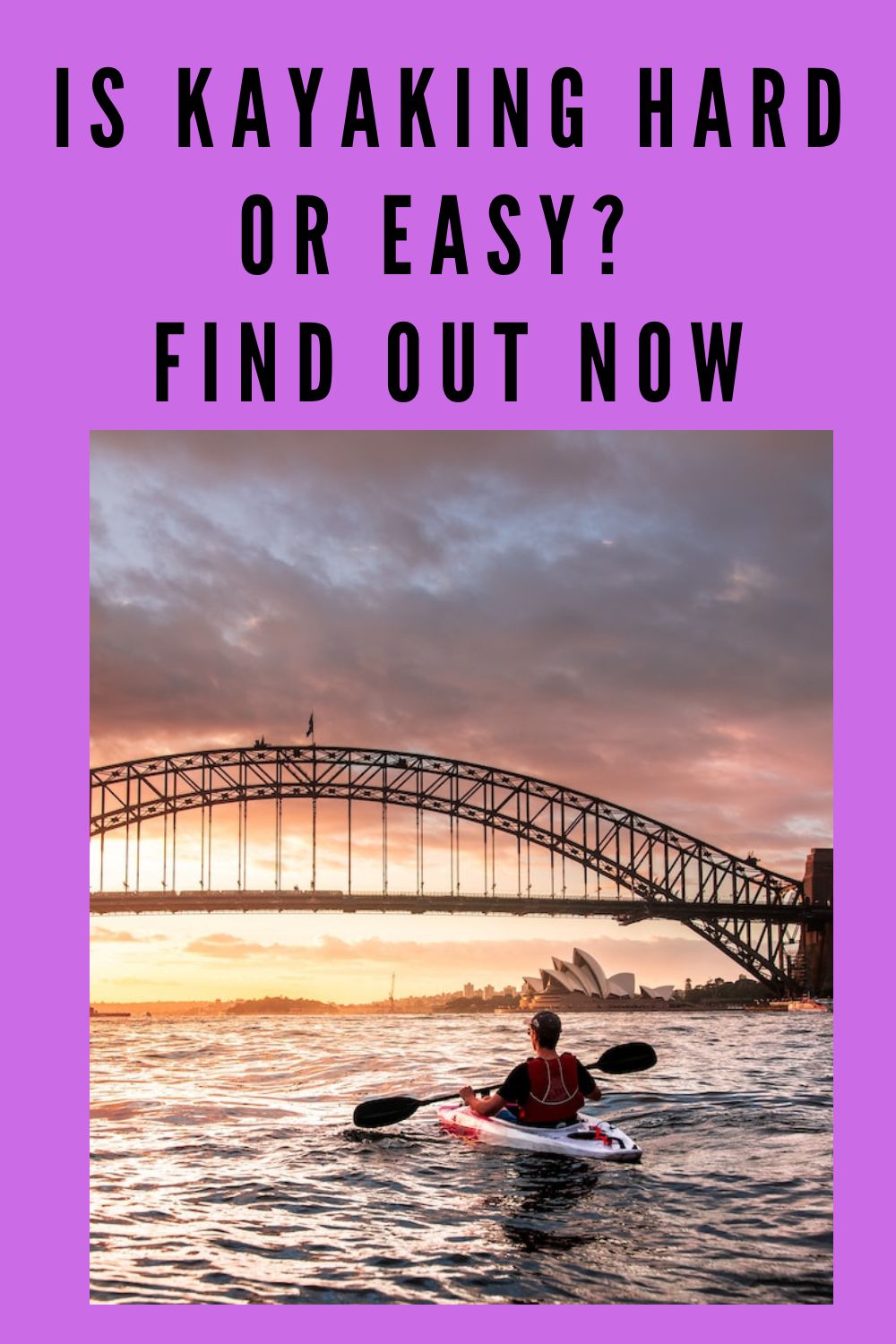
Mastering the Forward Stroke
Think of the forward stroke as the engine that powers your kayak. Here’s how to make it work for you:
- Get a grip: Hold the paddle with both hands about shoulder-width apart. Not too tight!
- Reach & rotate: Reach forward with one arm while twisting your body slightly. Imagine you’re planting the paddle blade in the water right by your toes.
- Power & twist: Push the blade back through the water and twist your body the other way. The paddle should end up out by your hip.
- Repeat on the other side: Now do the same thing with your other arm.
Tips:
- Use your core: Your torso does a lot of the work, not just your arms!
- Keep the blade vertical: If it’s angled, you’ll waste energy.
It takes a little practice to get it smooth, but soon you’ll be cruising across the water!
The Art of the Sweep Stroke for Turning
Turning your kayak requires the use of the sweep stroke, which helps you change direction smoothly and effectively.
To perform the sweep stroke, start by extending your arms out in front of you, keeping the paddle blade parallel to the water’s surface.
Use the power of your core muscles to sweep the paddle in a wide arc away from the kayak, creating a turning force.
The key is to maintain a consistent and fluid motion as you sweep the paddle in the direction you want to turn.
Practice this stroke on both sides to become proficient in maneuvering your kayak.
Efficient Use of Core Muscles in Paddling
Your arms do some of the work in kayaking, but your core muscles are the real stars! Here’s why:
- More power, less fatigue: When you twist your torso with each stroke, you get way more power than using just your arms. This means you can go further without getting tired out.
- Easier on your body: A strong core helps protect your back and shoulders from getting sore.
- Better balance: Engaging your core helps you stay stable in your kayak, even in a little chop.
How to do it: Think about pulling your belly button in towards your spine and keeping your back straight as you paddle. It should feel like a mini workout in your abs!
With a little practice, using your core while kayaking will become second nature. You’ll be amazed at the difference it makes!
Is Kayaking Hard or Easy?
Kayaking looks way more intimidating than it actually is! Here’s what makes it easier (or harder) for newbies. Understanding this can help you set yourself up for success:
- The Kayak Matters: Wider, more stable kayaks (like recreational sit-on-tops) are super beginner-friendly. They’re designed to be hard to tip over, which gives you confidence while you’re learning. Narrower, faster kayaks take more skill to handle.
- Where You Paddle: Calm lakes and slow rivers are perfect for learning the basics. Avoid rough water, big waves, or strong currents until you have more experience.
- Your Goals: Are you looking for a relaxing paddle to see some wildlife? That’s easy to pick up. Want to try whitewater or kayak fishing? Those things take more practice.
The Bottom Line: Kayaking has something for everyone. If you start with the right gear, calm conditions, and realistic expectations, you’ll probably find it easier than you thought, and a TON of fun!
Kayak Stability and Design Impact on Learning
One important factor that can influence the difficulty of kayaking is the stability and design of the kayak itself.
Kayaks are designed with different hull shapes, lengths, and widths, each offering varying levels of stability.
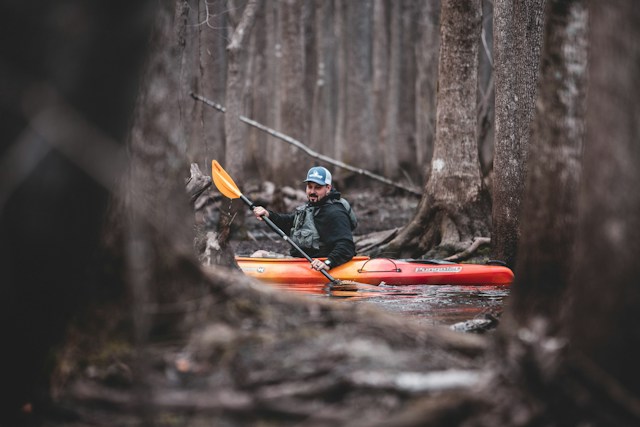
Wider kayaks tend to be more stable, making them easier for beginners to balance and maneuver.
Understanding the stability and design of different kayaks can help you choose a kayak that matches your skill level and provides a more comfortable and enjoyable experience on the water.
Dispelling Common Kayaking Fears
It’s totally normal to feel a little nervous about kayaking, especially the first time! Here are some common fears and how to tackle them:
- Tipping over: This is probably the biggest one! Choose a stable kayak, start in calm water, and it’s less likely than you think. Plus, you can learn how to get back in if it does happen.
- Deep water: You ALWAYS wear a life jacket (PFD) while kayaking. Even if you fall in, you’ll float.
- Wildlife: Encounters with sharks, etc., are super rare in most places where people kayak. It’s more likely you’ll see awesome stuff like turtles or dolphins!
- Getting lost: Start with short paddles in familiar spots. Let someone know your plan.
Knowledge is power: A quick kayak lesson will make a HUGE difference in your confidence level. They’ll teach you safety stuff and what to do if something unexpected happens.
The more you kayak, the more those fears will fade. Soon, you’ll be so focused on having fun, you’ll forget to be scared!
Capsizing and Rescue
Capsize and rescue situations are part of kayaking, and learning how to handle them effectively is crucial for safety.
Understanding and practicing self-rescue techniques, such as wet exits and deep water re-entry, can help you gain confidence in your ability to handle unexpected situations.
By becoming comfortable with the possibility of capsizing and knowing how to rescue yourself, you can enhance your overall safety and mitigate any fears or concerns that may arise during your kayaking adventures.
By considering the impacts of kayak stability and design, dispelling common fears, and being prepared for capsizing and rescue scenarios, you can better assess the difficulty level of kayaking.
Remember, kayaking is a skill that can be learned and improved upon with practice and experience.
With the right knowledge, training, and mindset, you can overcome any initial challenges and enjoy the beauty and thrill of kayaking.
Self-Rescue and Emergency Techniques
Safety should always be a priority in kayaking.
To ensure a safe and enjoyable experience on the water, it is essential to learn self-rescue and emergency techniques.
By mastering these skills, you can confidently handle unexpected situations and navigate potential risks that may arise during your kayaking adventures.
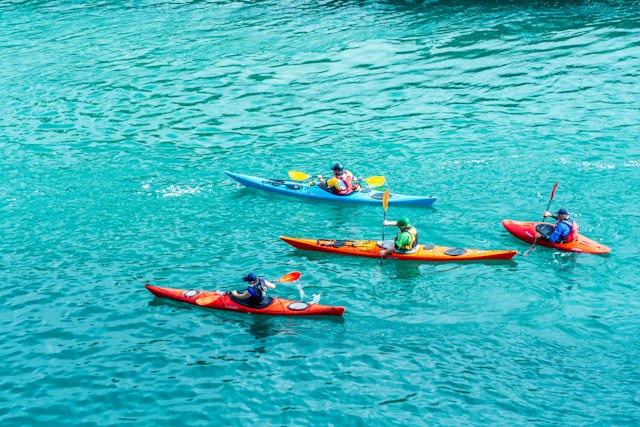
Importance of Wet Exit Training
Even experienced kayakers tip over sometimes! That’s why knowing how to do a wet exit is one of the most important skills to learn. Here’s what it is and why it matters:
- What it is: Basically, it’s how to get out of your kayak safely if you flip underwater.
- Peace of mind: Knowing how to handle a capsize takes away a lot of the fear for new paddlers.
- Muscle memory: Practicing a wet exit makes it automatic. That way, if you do tip over unexpectedly, you already know what to do.
Deep Water Re-entry Practice
Another valuable self-rescue technique is deep water re-entry.
This technique allows you to get back into your kayak after capsizing in deep water.
Deep water re-entry practice helps you regain control of the kayak and continue your journey without having to swim to shore.
By mastering this technique, you can quickly recover from an unexpected overturning and continue enjoying your kayaking experience.
Safety Equipment Needed for Kayaking
Kayaking is a lot of fun, but it’s important to remember that water can be unpredictable. That’s why having the right safety gear is a MUST, even for short paddles in calm conditions.
Here’s the minimum every kayaker needs:
- PFD (Life Jacket): This should go without saying. Always wear it!
- Whistle: Small, cheap, and can save your life if you need help and can’t paddle to shore.
- Bilge Pump: A swamped kayak is hard to paddle and more likely to flip again. This lets you get the water out.
- Kayak Leash: Keeps your kayak from floating away if you fall out.
More may be needed: Things like a waterproof flashlight, flares, or a first-aid kit could be a good idea depending on where you paddle and your level of experience.
Don’t think of safety gear as a hassle. Think of it as your ticket to worry-free adventures on the water!
Physical Fitness and Kayaking
Kayaking is more than just a fun way to spend an afternoon. It’s a fantastic workout and has tons of benefits beyond just burning calories. Here’s why:
- Heart healthy: Every paddle stroke gets your heart pumping. Kayaking improves your stamina and helps lower your blood pressure.
- Build muscle: Kayaking works your arms, shoulders, back, core – basically your whole upper body!
- Legs too! They work harder than you think to help you balance and steer.
- Nature’s stress reliever: There’s something about being on the water that just melts stress away. It’s great for your mental health.
The best part: You don’t have to be super fit to start kayaking! Paddling at a relaxed pace is still a good workout, and you’ll naturally get stronger and build endurance the more you do it.
What to Wear and Bring?
Personal Floatation Device (PFD)
When kayaking, one of the most important pieces of gear you need is a Personal Floatation Device (PFD), also known as a life jacket.
A PFD is essential for your safety on the water and can help keep you afloat in case of an emergency.
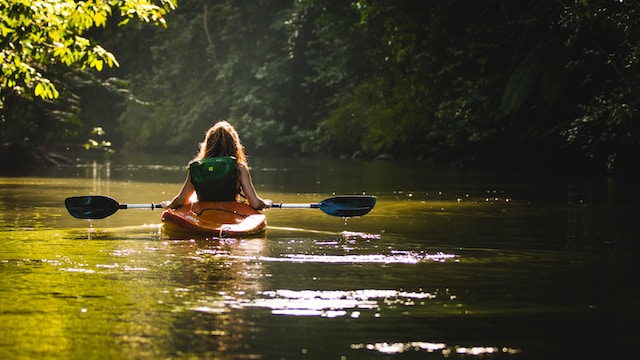
When choosing a PFD, make sure it is Coast Guard approved and fits you properly.
Look for adjustable straps and a comfortable fit to ensure maximum safety and mobility while kayaking.
Weather and Clothing Choices
Proper attire is crucial for a comfortable and enjoyable kayaking experience.
Consider the weather conditions when selecting your clothing.
In warmer weather, opt for lightweight and breathable materials that provide sun protection, such as quick-drying shirts and shorts.
In colder weather, layer your clothing to regulate your body temperature.
Wear a wetsuit or drysuit if kayaking in cold water to prevent hypothermia. Don’t forget to protect your feet with water shoes or neoprene booties.
Gear Options: Rent or Buy?
When it comes to kayaking gear, you have the option to rent or buy.
Renting can be a cost-effective choice, especially if you’re a beginner or only kayak occasionally.
It allows you to try different gear before making a purchase.
However, if you plan to kayak frequently or want gear tailored to your preferences, buying your own equipment may be the better option.
Consider your budget, frequency of kayaking, and long-term goals to make the right decision for you.
Kayaking vs Canoeing: Which is Easier?
When it comes to water sports, kayaking and canoeing are two popular choices.
If you’re a beginner looking to get started, you may be wondering which activity is easier to learn.
Let’s compare kayaking and canoeing in terms of ease of learning so you can make an informed decision.
Differences between Kayaking and Canoeing
Kayaking and canoeing both involve paddling on the water, but they have distinct differences.
In kayaking, you sit inside a closed cockpit and use a double-bladed paddle.
This design offers greater stability and maneuverability, making it easier for beginners to control the kayak.
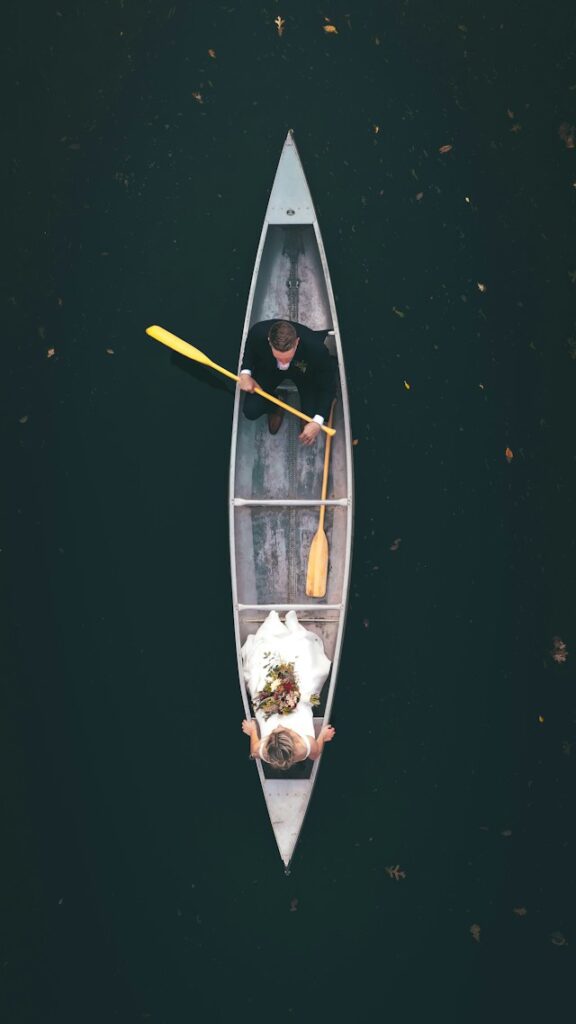
Canoeing, on the other hand, involves an open boat where you kneel or sit on a raised seat. Canoes use a single-bladed paddle, requiring different paddling techniques.
Ease of Learning for Beginners
If you’re new to paddling, kayaks are generally considered a bit easier to learn. Here’s why:
- Stability: Most beginner kayaks are designed to be hard to flip over. Canoes can be a bit tippier, especially at first.
- Double-bladed paddle: Kayak paddles are easier to get the hang of than the single-bladed paddle used in canoes.
- Smaller space: Kayaks feel less intimidating since you’re sitting lower and more enclosed.
This doesn’t mean canoeing is super hard! But it might take a little longer to feel confident.
Bottom line: Both kayaking and canoeing are awesome. If you want the easiest possible start, a kayak is probably the way to go.
Conclusion
Kayaking has something for everyone, whether you’re looking for a relaxing way to enjoy nature or an adrenaline-pumping adventure. Through this article, you’ve learned everything you need to know to get started.
Kayaking IS beginner-friendly! With the right gear, a little practice, and basic safety awareness, you’ll be out on the water in no time.
So, if any of this sounds appealing, kayaking might just be your new favorite hobby:
- Love being outdoors? Paddling is a fantastic way to explore.
- Looking for a fun workout? Kayaking builds muscle and gets your heart pumping.
- Need to de-stress? There’s something magical about being on the water.
Why not try it? You might be surprised at how much you love gliding across the water, soaking in the scenery, and discovering the freedom and joy of kayaking.
Frequently Asked Questions
Is kayaking difficult for beginners?
Kayaking may look intimidating, but it’s surprisingly beginner-friendly! Sure, you’ll need to learn some basics like paddling and how to balance, but most people pick these up quickly.
Here’s why kayaking is great for newbies:
Easy to get started: Lessons or guided tours make learning a breeze.
Stable kayaks: Many kayaks are designed to be hard to flip, which builds confidence.
Calm water is perfect: Lakes and slow rivers are ideal for practicing your skills.
Don’t let the fear of the unknown stop you! With a little guidance, you’ll be surprised at how quickly you can be out on the water, paddling along and having a blast.
Is it easy to fall in a kayak?
Most people worry about tipping over when they first try kayaking. The good news is, it’s actually harder than you think! Here’s why:
Kayaks are designed to be stable: Especially wider beginner kayaks – they don’t want to flip!
Technique matters: Learning how to paddle properly helps you keep your balance.
Life jackets are your friend: Even if you do fall in, a life jacket (PFD) keeps you safe.
The more you kayak, the less you’ll worry about tipping. Most paddlers find it becomes a non-issue pretty quickly. Think of it like riding a bike – a few wobbles at first, then smooth sailing!
Let me know if you have any o
Do kayaks tip over easily?
Kayaks Are Designed to Be Your Friend
Don’t let fear of tipping stop you from trying kayaking! Here’s the deal with stability:
Most kayaks, especially wider ones for beginners, are built so they don’t want to flip over. You kind of have to work at it!
Narrower, faster kayaks can be a bit tippier, but most beginners don’t start with those anyway.
Paddling the right way helps you stay balanced. Good technique makes a big difference!
Bottom line: While anything is possible, tipping over your kayak on accident is not something most paddlers experience very often.
Is kayaking hard on the body?
Kayaking is a Workout!
Kayaking is awesome for getting in shape, but it definitely uses some muscles you might not be used to! Here’s how to avoid feeling the burn too much:
Sore arms & shoulders: This is pretty normal for beginners, especially after longer paddles. Good paddling technique helps a lot!
Stiff back: Keep your posture straight. Short breaks to get out and stretch make a huge difference on longer trips.
It gets easier: The more you kayak, the stronger you’ll get, and those aches will fade.
Is kayaking a cheap hobby?
Think kayaking is only for people with lots of money for gear? Think again! Here’s why it’s surprisingly affordable:
Start with the basics: You really just need a kayak, a paddle, and a lifejacket (PFD).
Used gear is your friend: Tons of people sell perfectly good used kayaks for way less than new ones.
Renting is an option: Try before you buy, or just rent occasionally to explore new areas without owning a bunch of gear.
The experience is free: Once you have your gear, getting out on the water doesn’t cost a dime!
Kayaking gives you an amazing way to explore and get exercise without gym memberships or expensive equipment.
Do kayaks flip a lot?
Most people have this image of kayakers constantly tipping over, but the truth is it’s not that common, especially if you take a few precautions. Here’s the deal:
Beginners sometimes tip: It’s part of the learning process, no big deal!
Stable kayaks make a difference: Wide beginner kayaks are designed to be hard to flip.
Technique matters: Learning to paddle properly helps you stay balanced.
Rough water is trickier: Start on calm water and build up your skills.
Bottom line: While anything is possible, most kayakers very rarely have issues with flipping over.
Are kayaks uncomfortable?
The truth is, some kayaks aren’t that comfy, especially for long trips. But there’s an easy fix! Here’s the deal:
Seat matters: Padded seats with back support are way better than hard plastic.
Your size matters: Finding a kayak that fits you properly makes a huge difference.
Posture is key: Sitting up straight helps prevent back pain.
Upgrades are awesome: A simple seat cushion can work wonders if your kayak seat is basic.
Don’t let a little discomfort scare you away from kayaking. With the right gear and technique, you can be out on the water for hours!
Is kayaking a good hobby?
Kayaking isn’t just a hobby; it’s a way to experience the world in a whole new way. Here’s what you get:
Explore amazing places: Paddle places you can’t get to any other way.
Get a unique perspective: It’s not the same as being in a big boat!
Fun workout: Kayaking builds strength and gets your heart pumping in the best possible setting.
Relax and de-stress: The rhythm of paddling and being on the water is pure magic for your mind.
Do it your way: Go solo for peace, or share the adventure with friends.
Kayaking is safe, accessible to most people, and opens up a world of possibilities! It’s the perfect mix of outdoor adventure and finding your inner calm.

